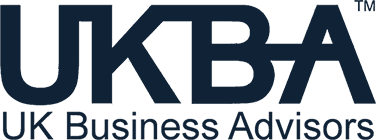
When running a business, maintaining positive cash flow is essential.
If for whatever reason, your cash flow is poor, it could lead you to fail to meet your financial commitments, as well as potential damage to those key relationships and disruption to your typical operations.
While most healthy businesses should be able to keep cash flowing consistently and positively, it only takes one unexpected expense or hit to income to leave you in a tight position. It is critical to act swiftly before the issue spirals and results in unwanted debt or disruption in this scenario.
Fortunately, there are various external financial options on the market, specifically designed to boost cash flow in businesses, in line with the problems they may be facing. Below, we have listed to most common solutions and how they can support you.
- Trade finance
Trade finance bridges the gap between importer and exporter. Around 80-90% of the world relies on it, showing how popular it is in funding trade.
For manufacturers and engineering businesses, trade finance allows you to fund the purchase of the stock you need to fulfil an order against confirmed purchased order, whether you import the goods to fulfil domestic orders or export to foreign markets.
The benefit of trade finance is that it enables companies to conduct global trade with less strain on their finances. If you want to make the most of overseas custom or supply but are worried about the gaps in funding while you wait for the payments, this gives you a route forward. It can also be instrumental in business growth by attracting more sales.
When you undertake trade finance, you need to work with a trade financer who will provide a loan or letter of credit, acting as payment. You will repay the lender once you have fulfilled the order or when the set timeframe has passed.
- Invoice finance
Invoice finance is designed to unlock capital that may be tied in your unpaid invoices. With one in 10 SMEs at risk of closure due to late payment, this is a common cause of cash issues for businesses.
A lender will give you a set sum with invoice finance, with your unpaid invoices used as collateral. You can typically get around 80-90% of the total value of your invoices, but some sectors – such as construction – offer lower advances of 50-60%. It’s also a fast way to access funds, which could be released in as little as 24 hours.
Once the client pays the invoice, the balance of the advance is paid less admin and interest charges. Due to this, it’s vital that you receive customer payments before the end of the advance period, typically 90-120 days from the invoice date.
It comes in two forms: invoice factoring, the lender takes control with payments made directly to them, or invoice discounting, where the customer pays you and a degree of confidentially is kept.
- Stock finance
Stock finance is another popular cash flow solution. It often sits under the trade finance umbrella but can also be used if you operate domestically. Once again, a lender will give you funding, with stock sat in your warehouse used as collateral.
How much money you can secure will vary depending on how much stock you have, where they are stored, what stage it is at (e.g. work in progress versus raw materials) and how fast-moving it is. The lender will carry out a third-party stock valuation before a final sum is agreed.
A stock finance loan typically lasts for 90 to 120 days. This means that you have the stock you need to fulfil your projected orders without having to tie your finances up in it while it is sat in your balance sheet.
- Sale and leaseback
If you have high-value equipment in your business but reduced cash flow causing disruption, sale and leaseback might be an option. As the name suggests, this is where you sell assets owned by your business – such as equipment or vehicles – and then lease it back from the lender.
By doing so, you get a lump sum that would otherwise be tied up in your assets, which is then converted into a repayment schedule of regular instalments. You retain use of your equipment, which will allow you to continue to operate smoothly while gaining improved cashflow.
- Short-term loans
Alongside the specialised solutions already listed above, other short-term loans can provide you with the funding you need to address a temporary money issue without a long-term commitment.
Spend time researching these loans to find a competitive deal. Your eligibility and affordability will need to play a factor here, so you can find a loan where you meet the application criteria and can afford the monthly repayments. Short-term loans tend to have a higher interest rate, so you need to factor this in.
It’s worth also considering alternative lenders, who may be able to offer more flexible rates. They can also release funding quicker in some circumstances, which may be beneficial if you have an urgent need.
By understanding the various cash flow solutions available to SMEs, you can prepare yourself for any issues that may arise. This will enable you to take quick, decisive action that prevents the problem from worsening and spelling real danger for your business
It will also allow you to improve the general cash flow involved in your daily operations, leaving you in an overall more robust financial position.
If you need support in improving your business’s finances or handling a cash emergency, we can help.
